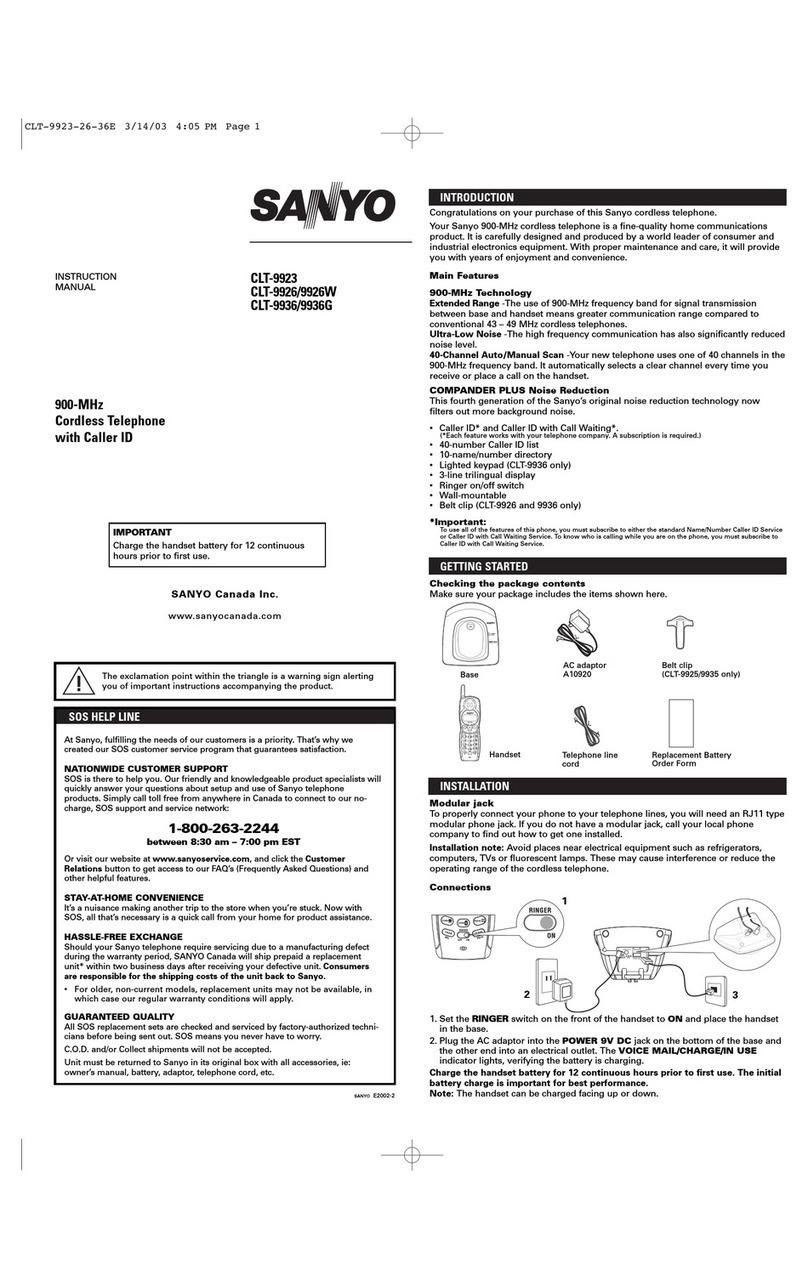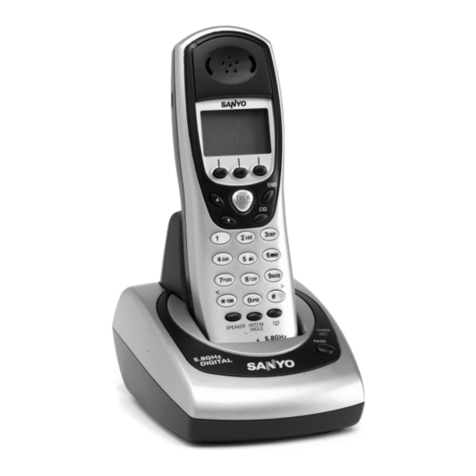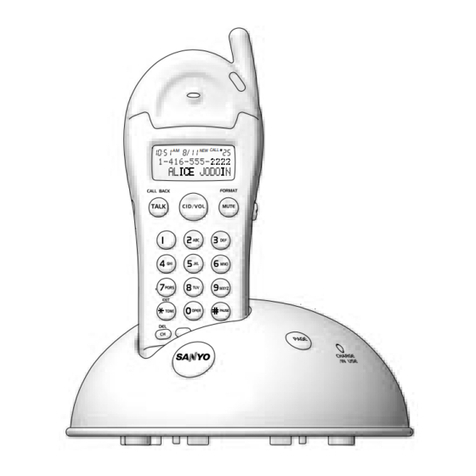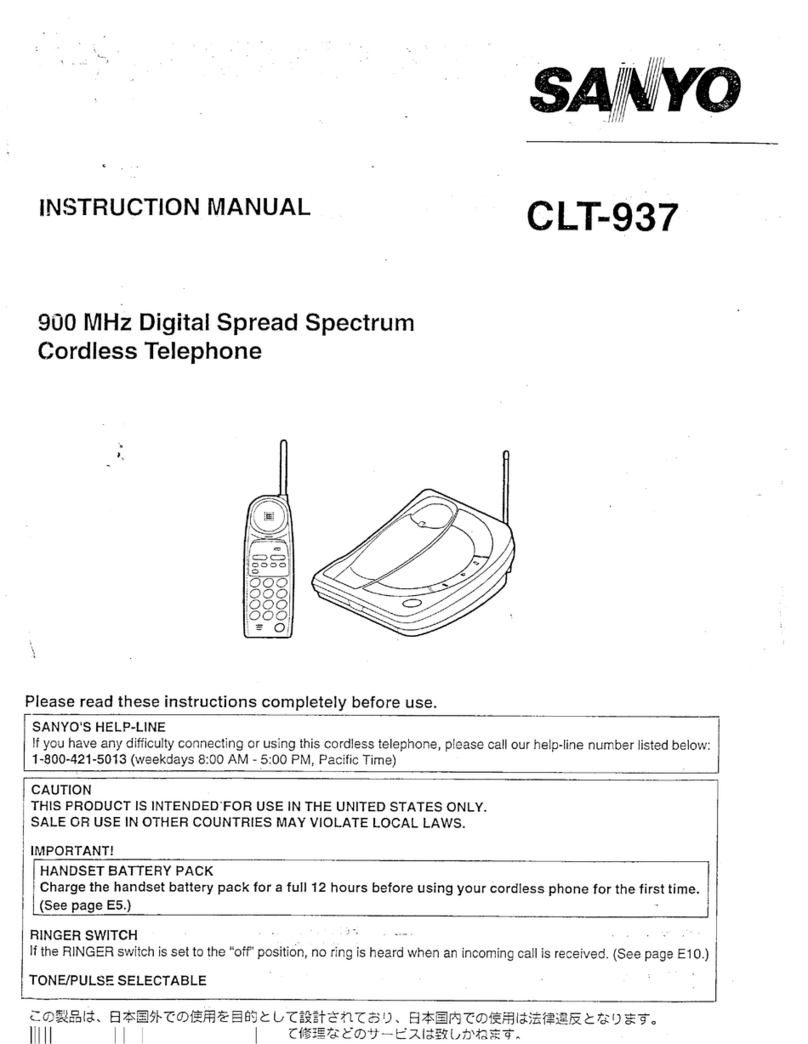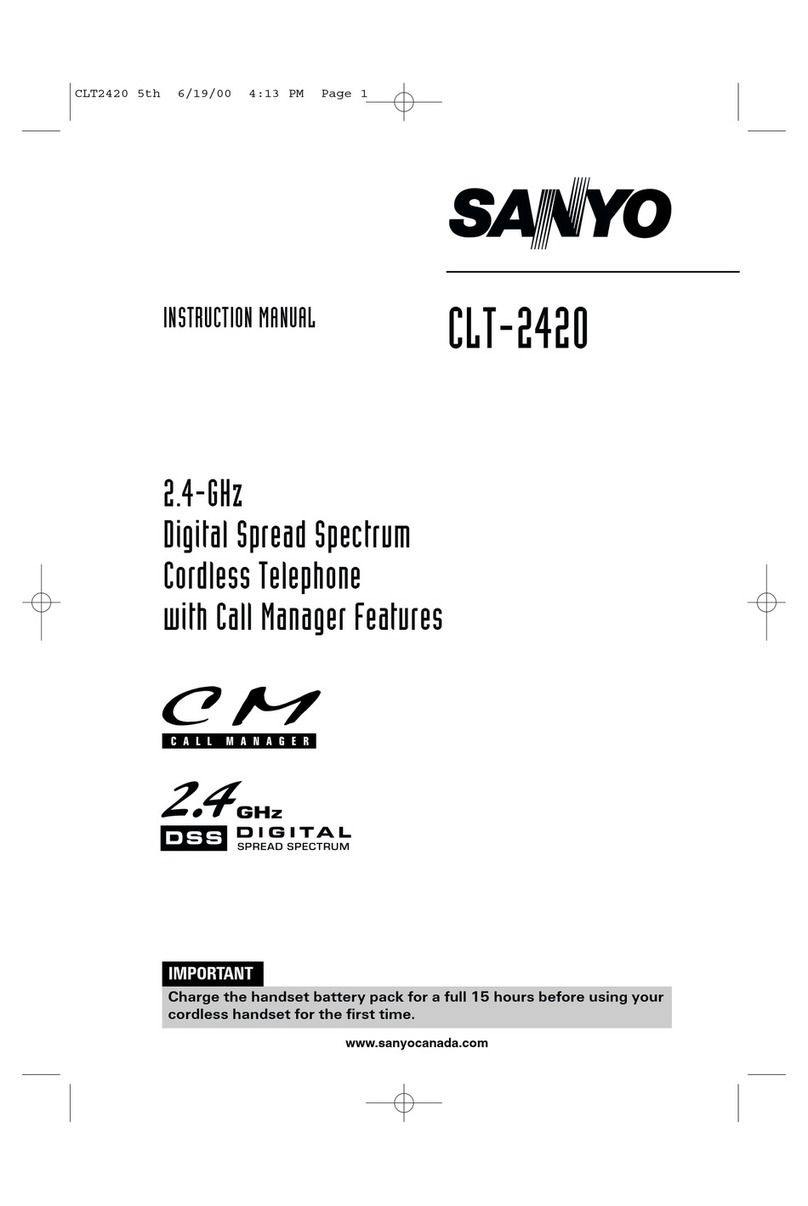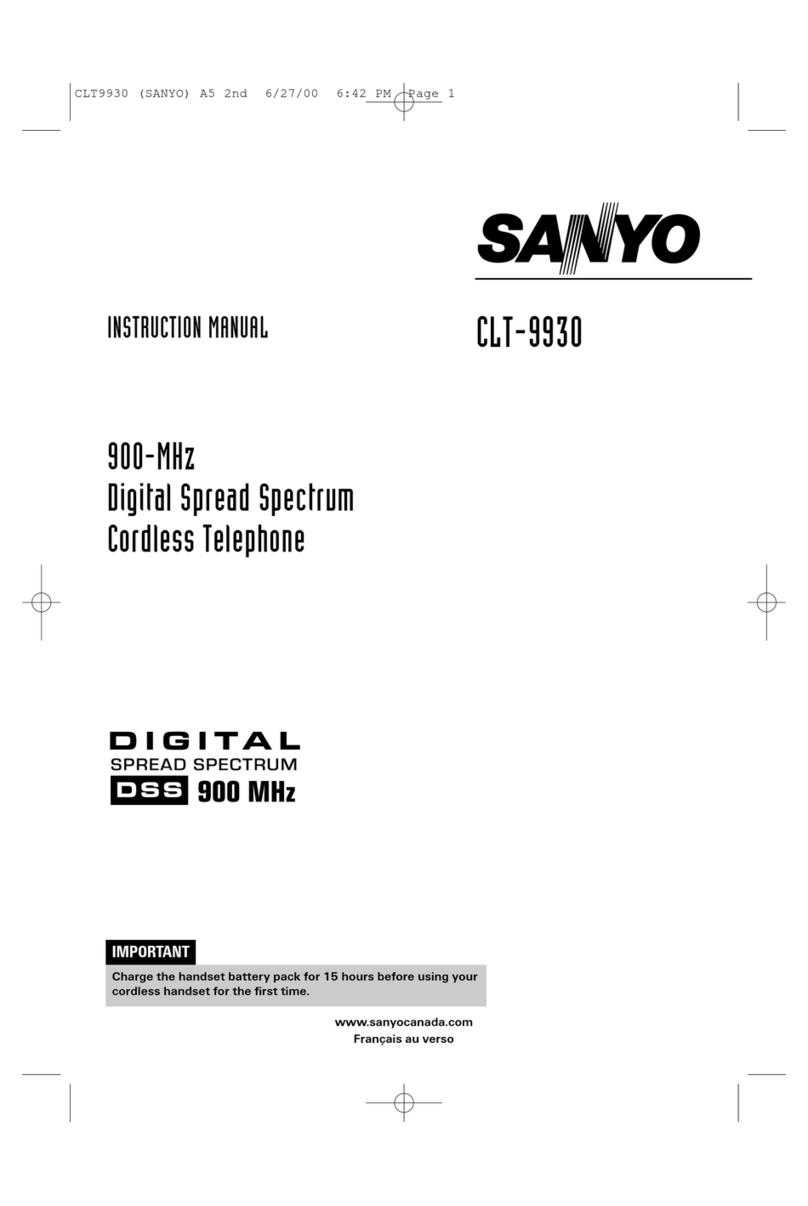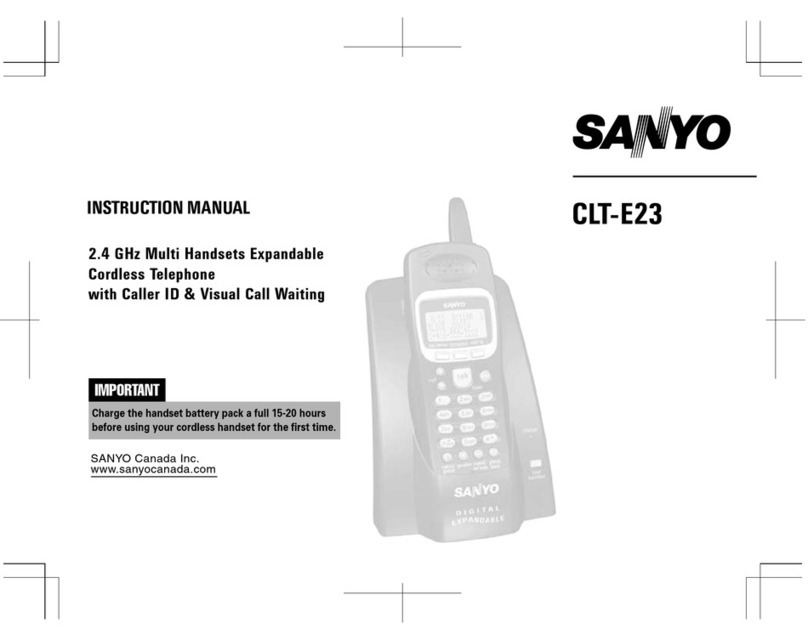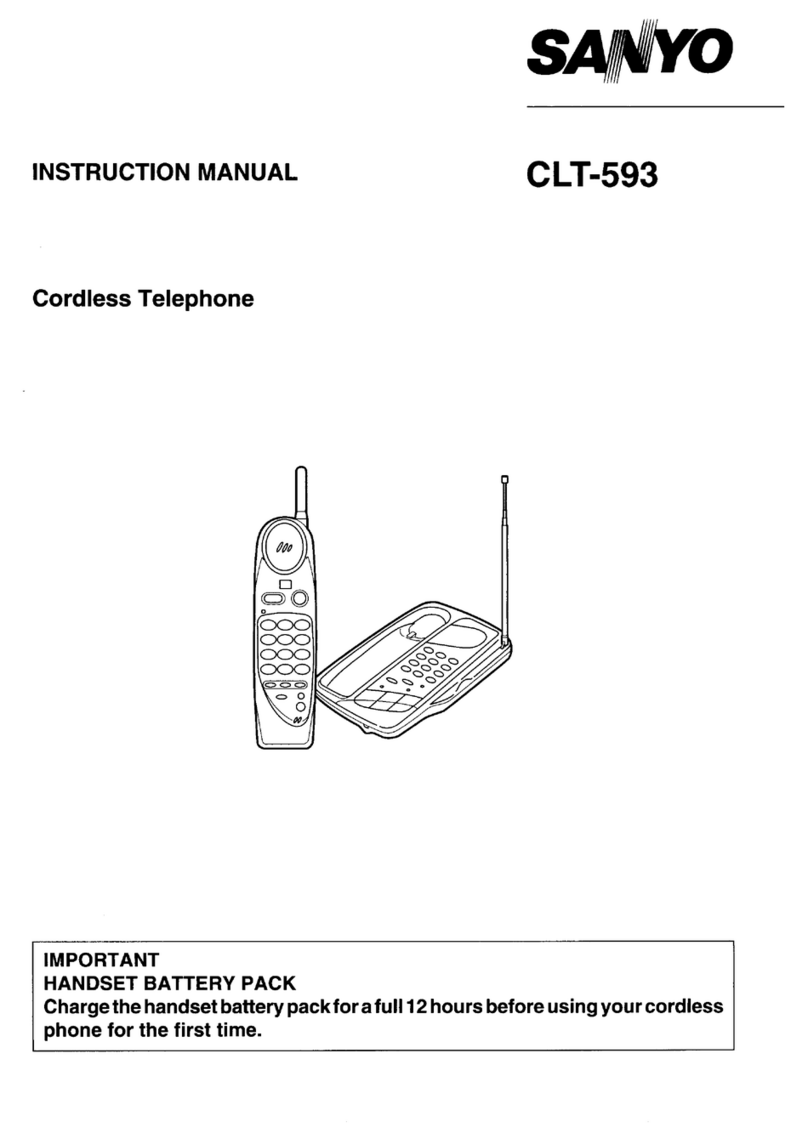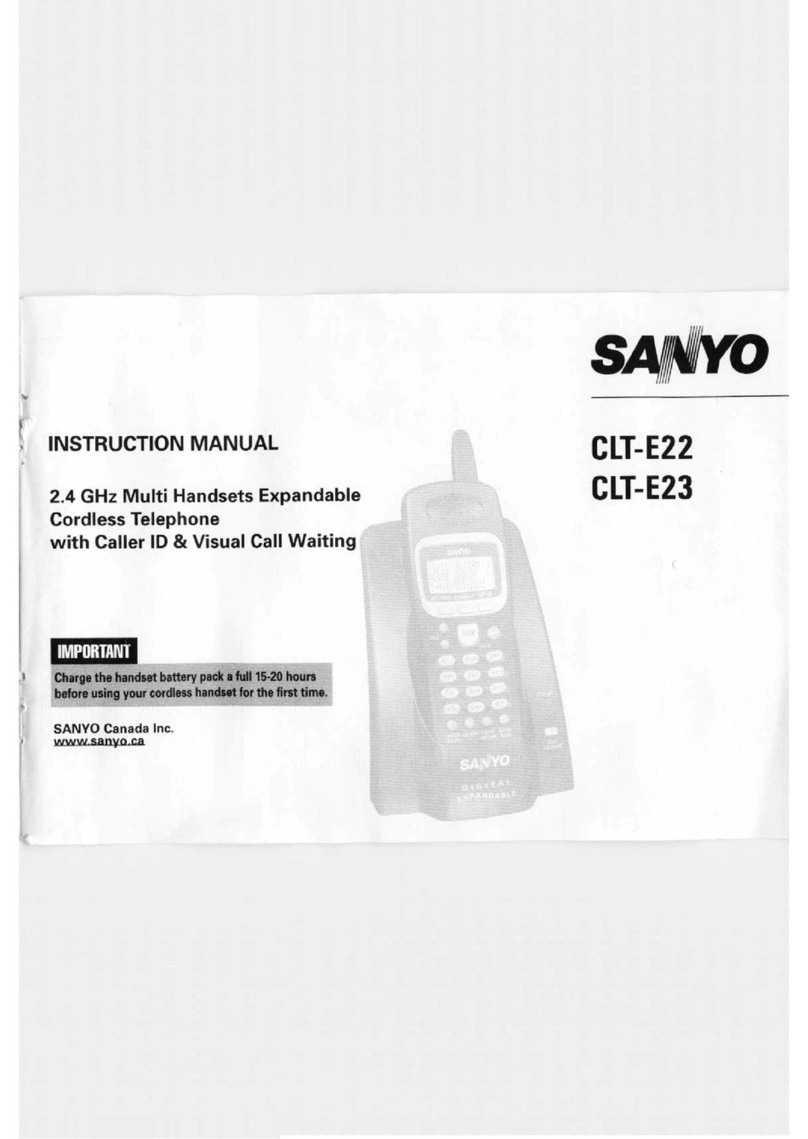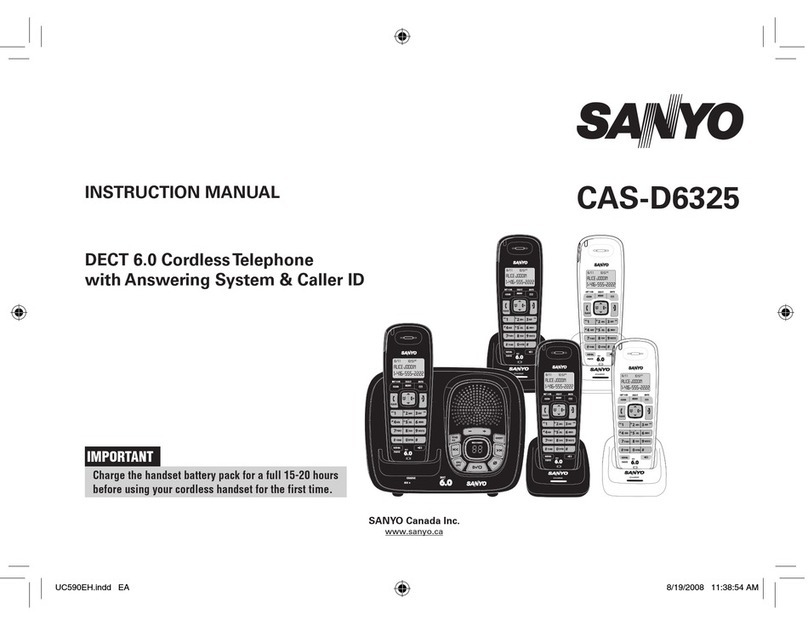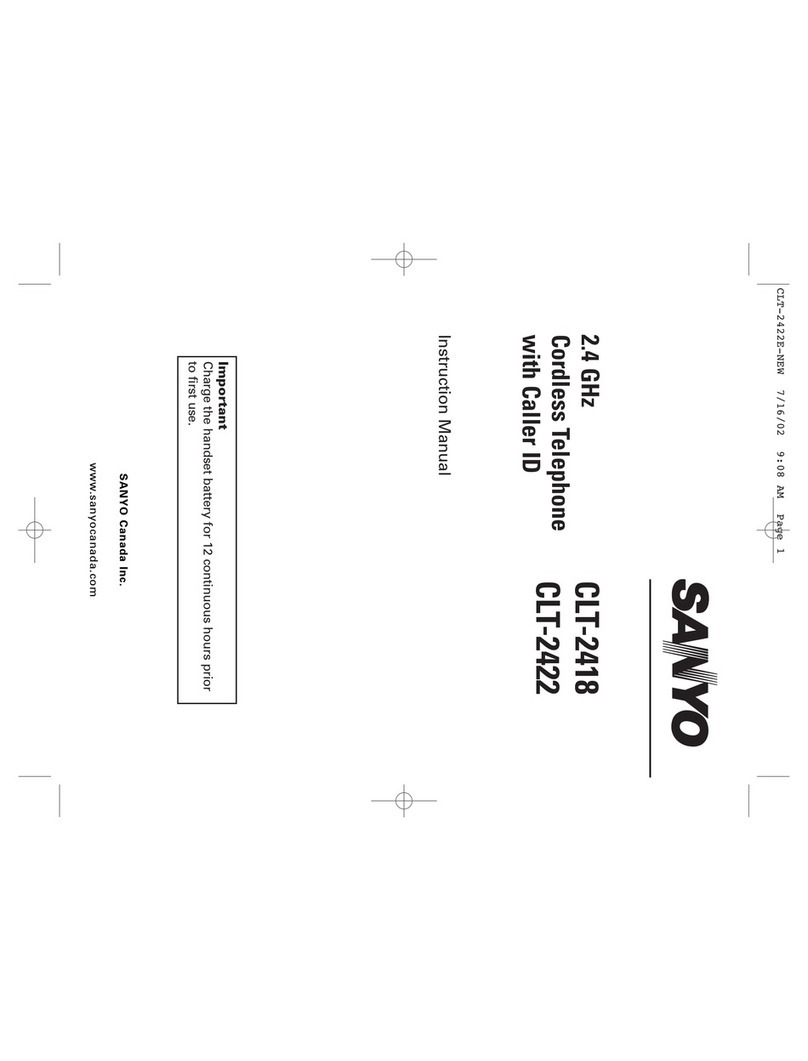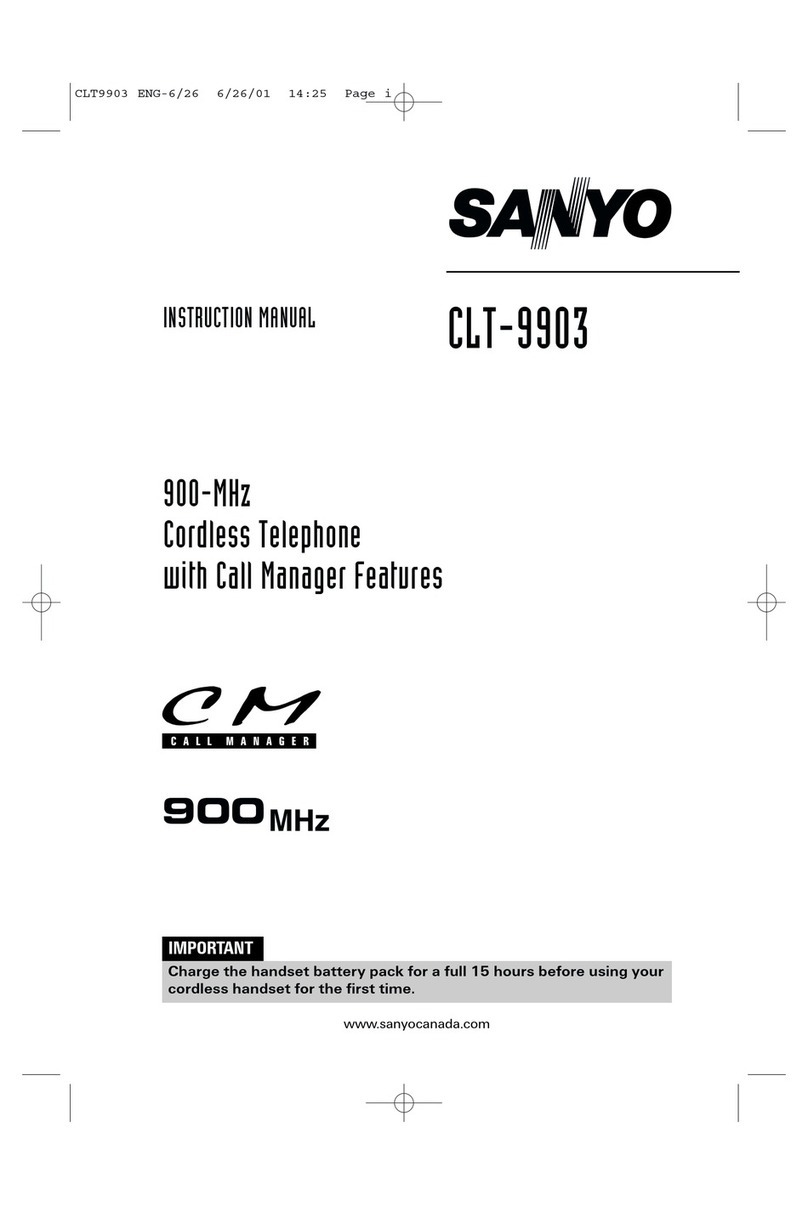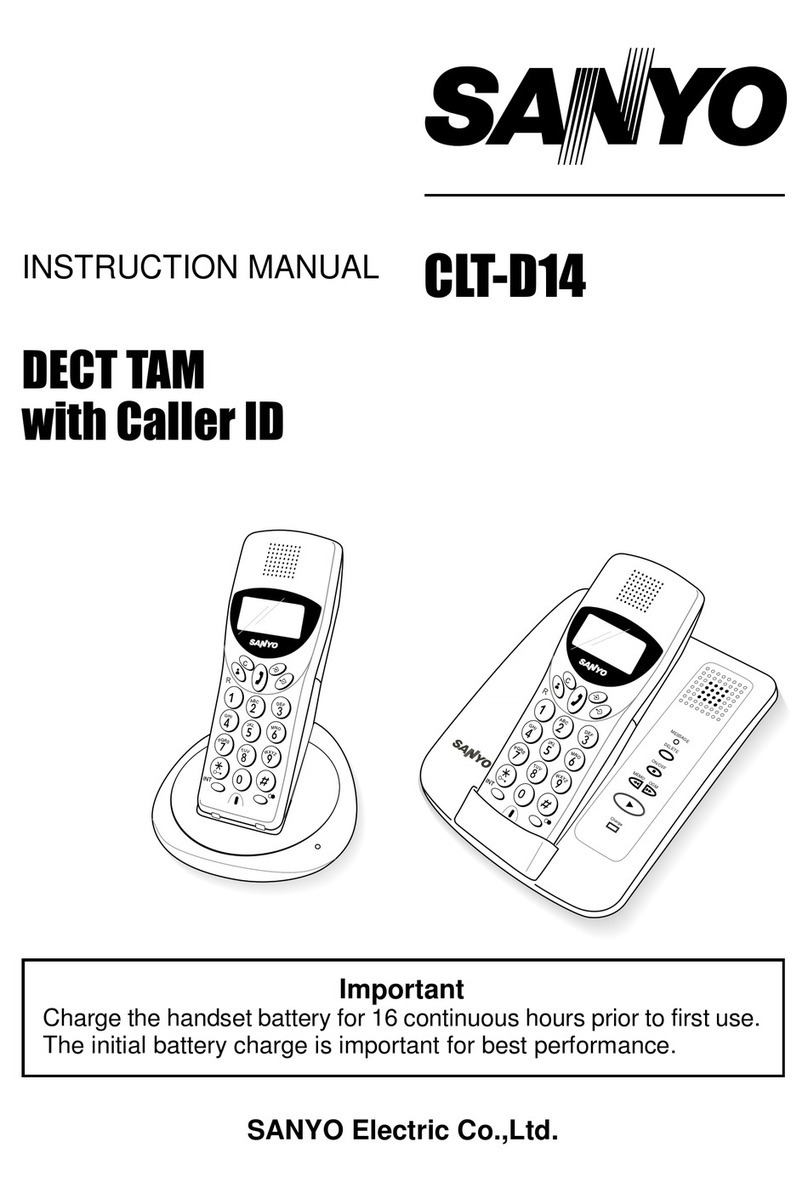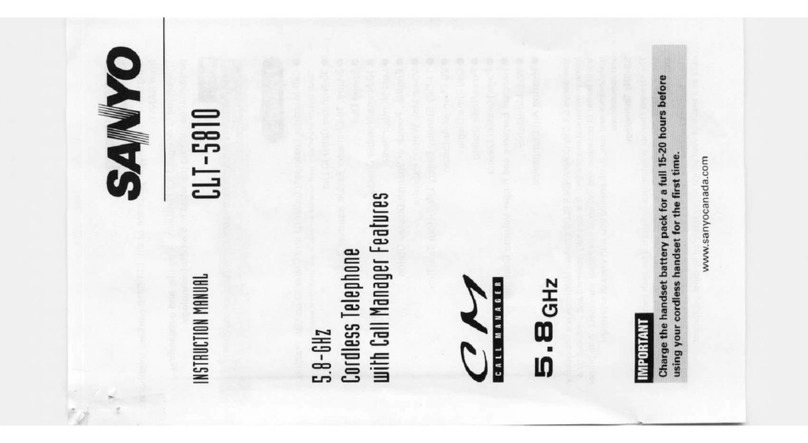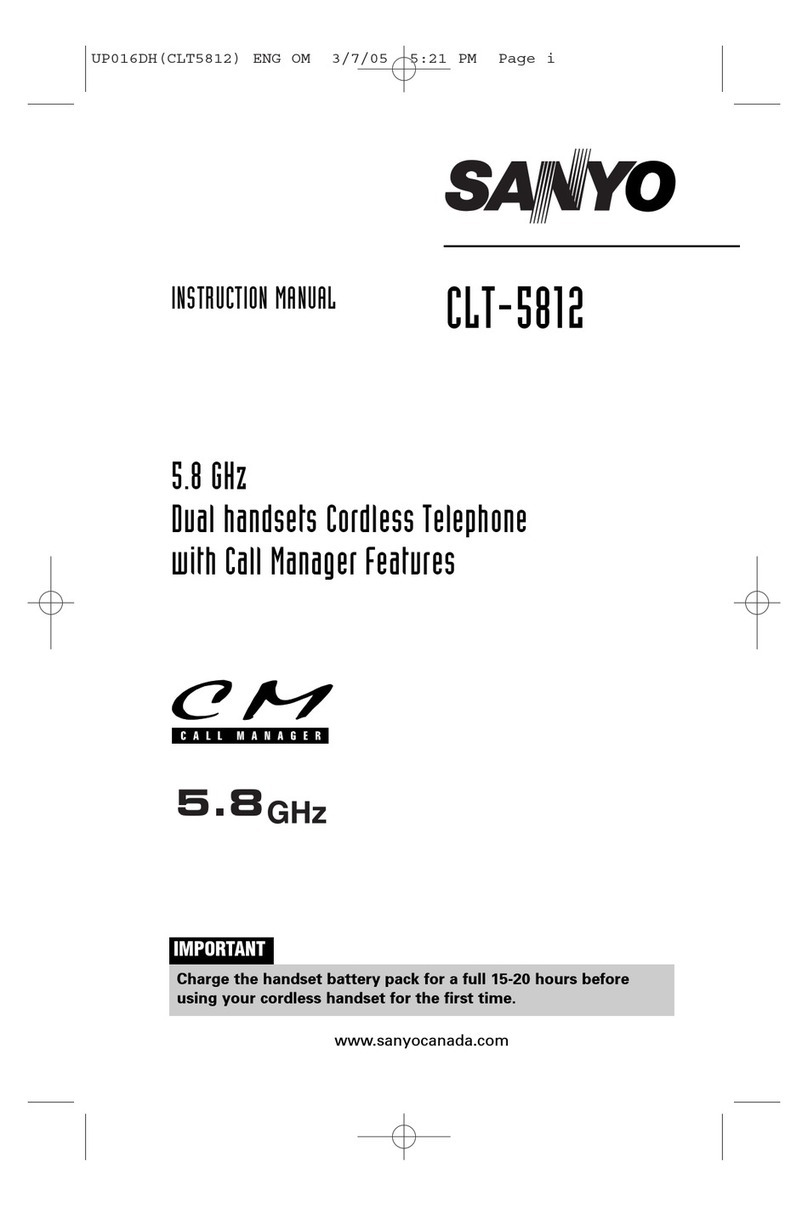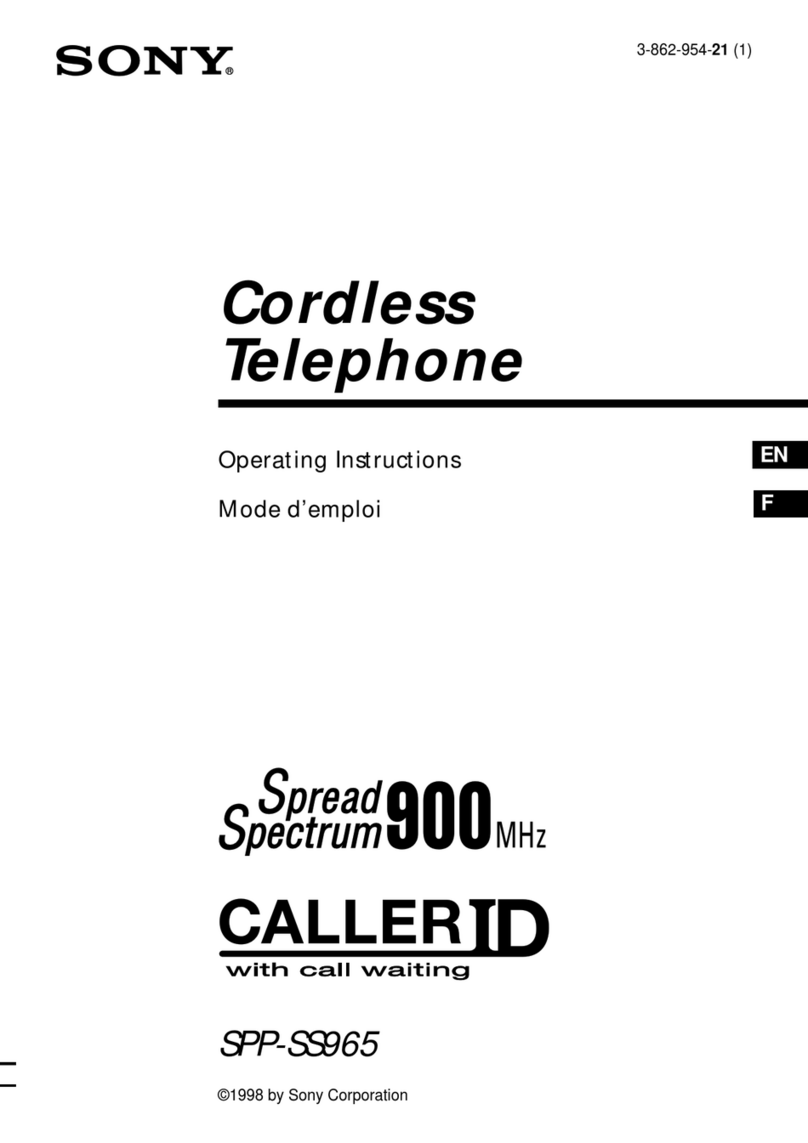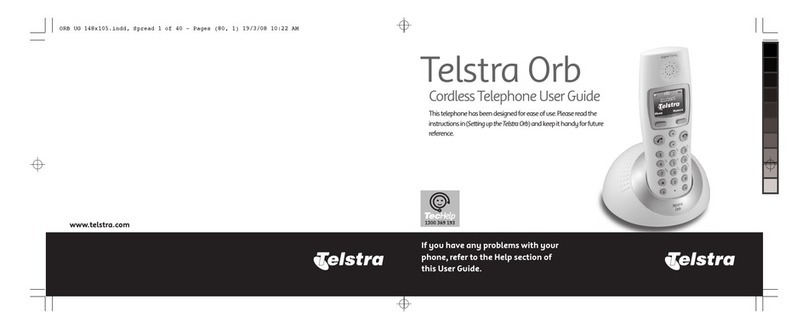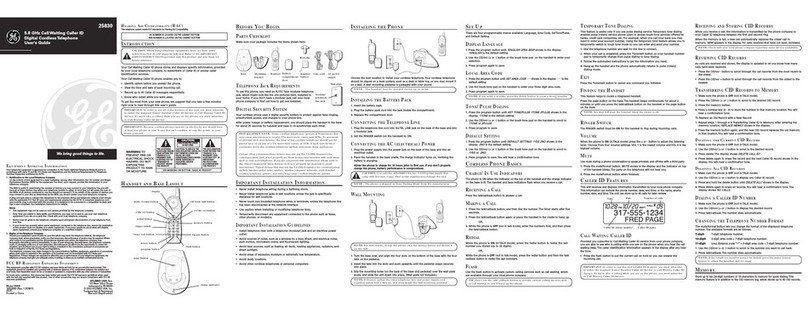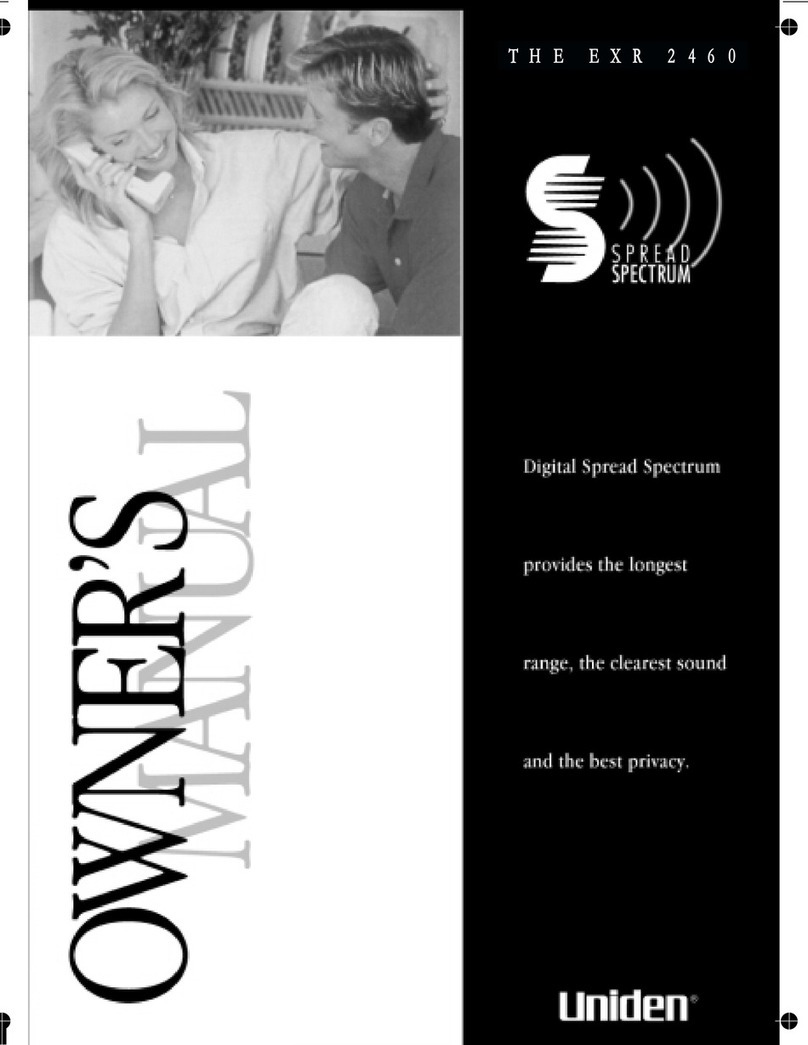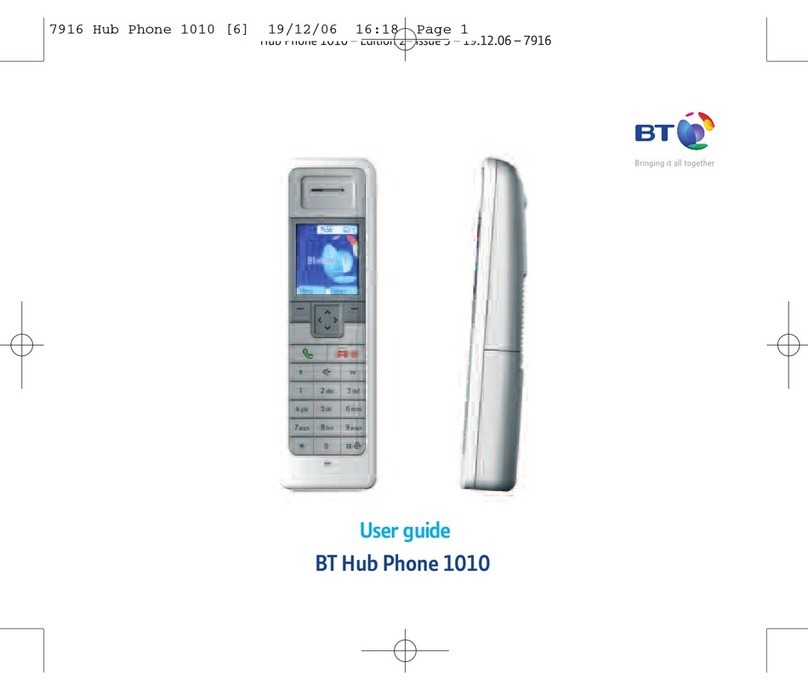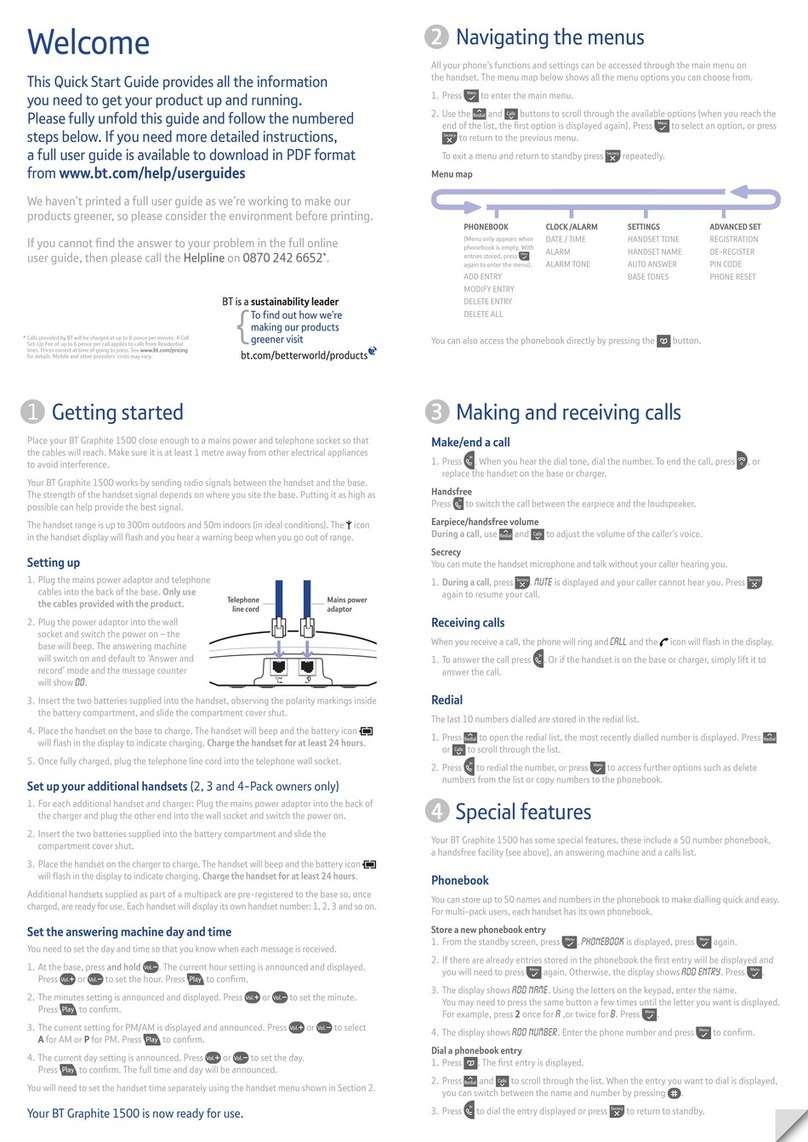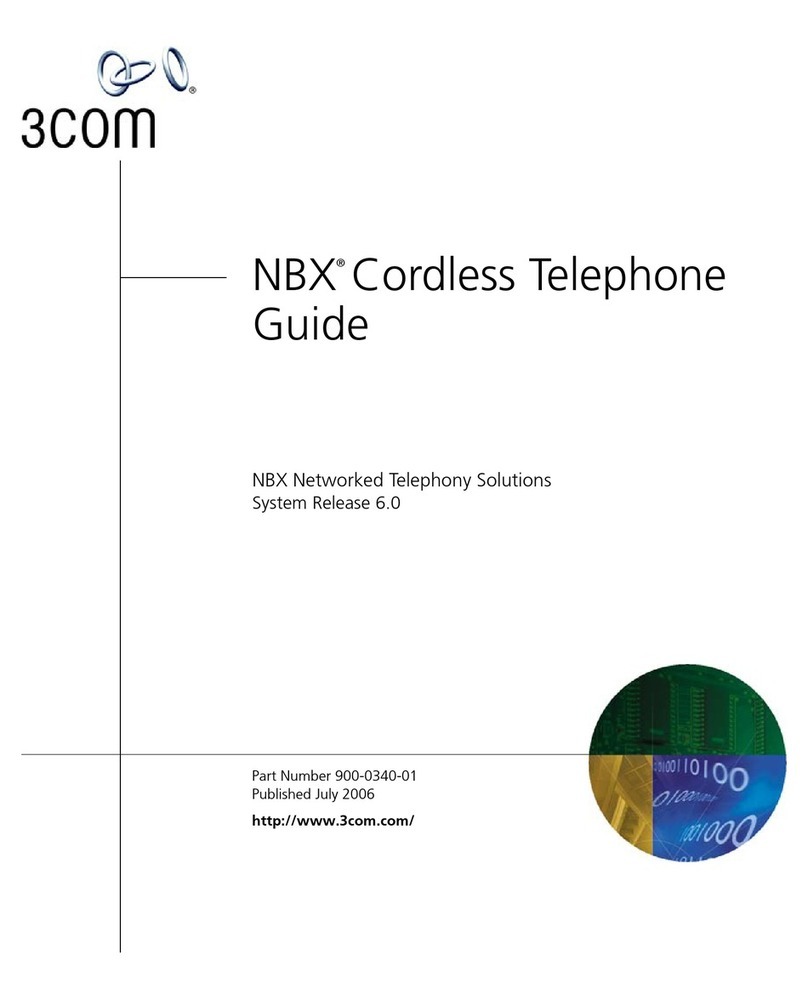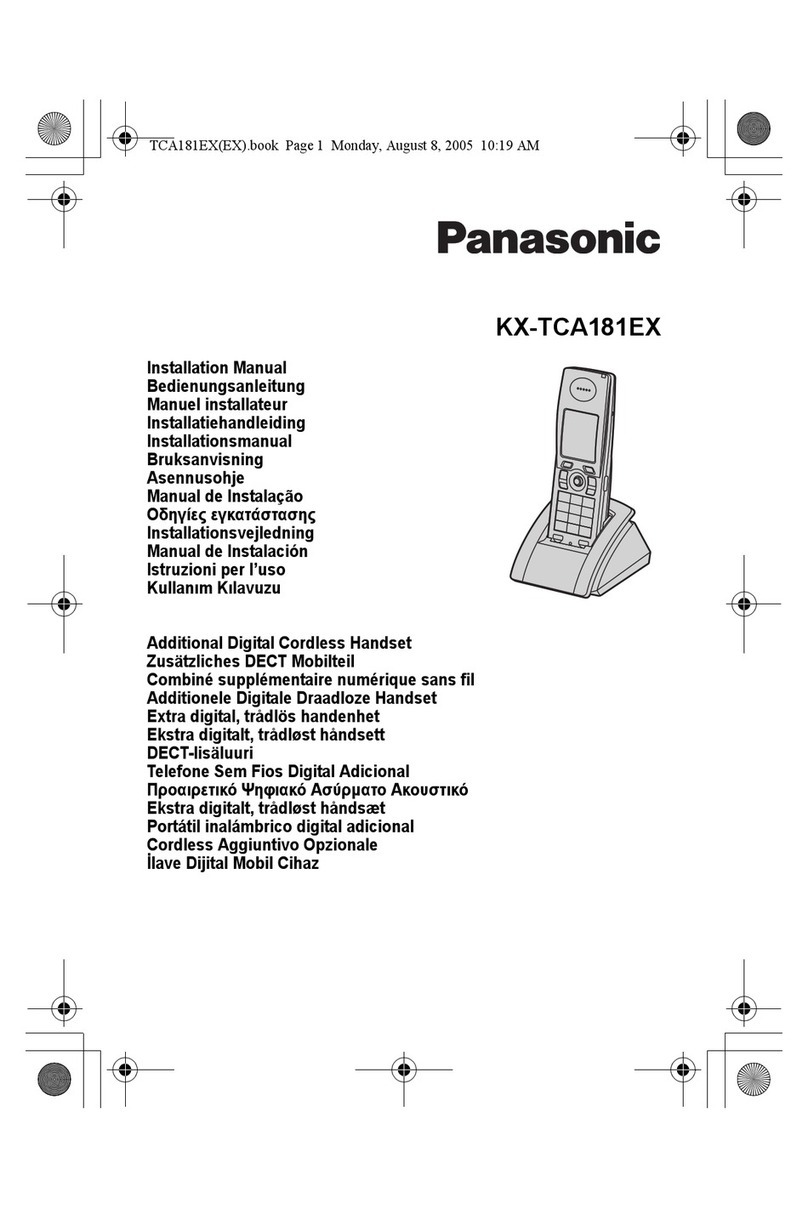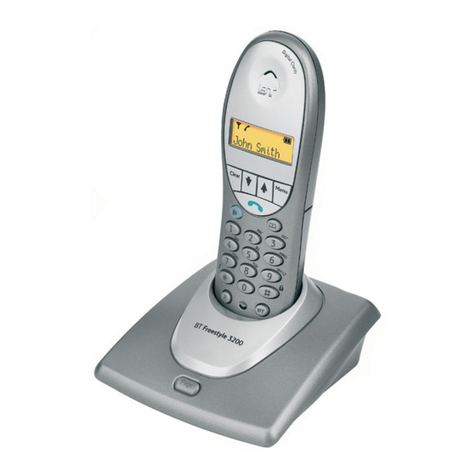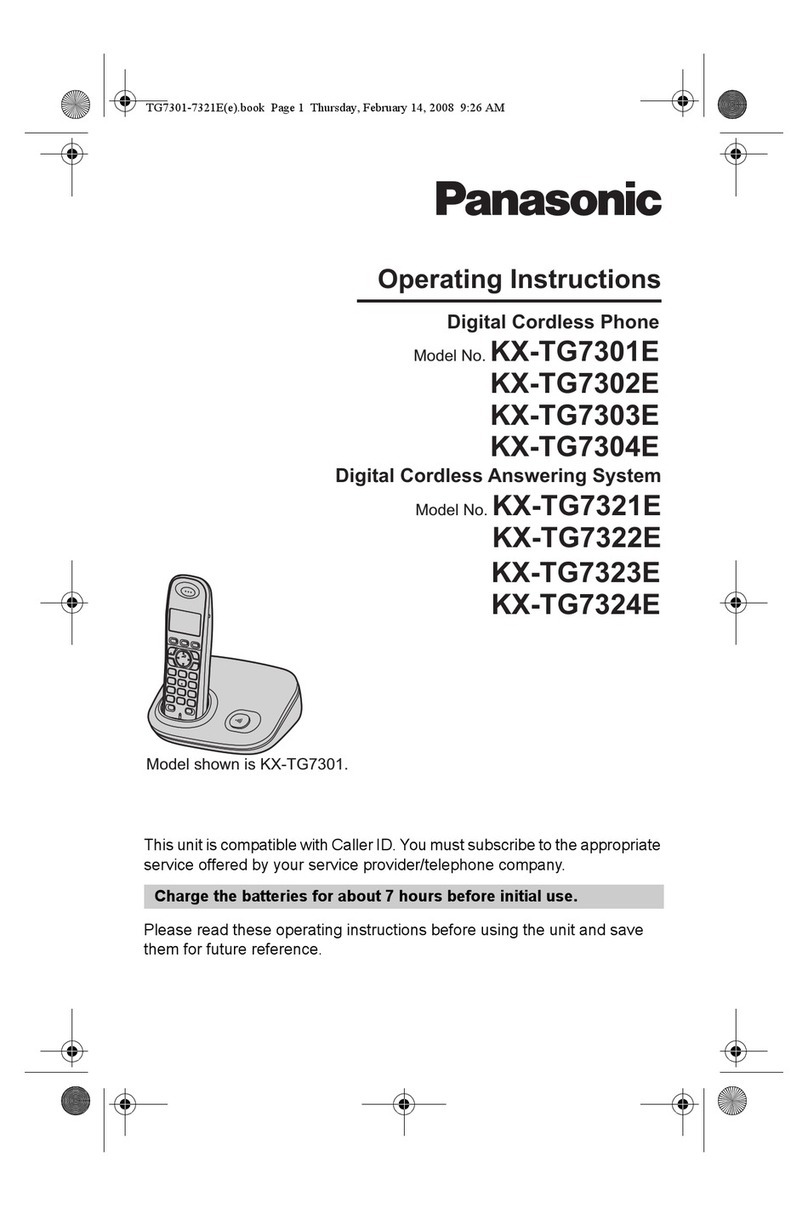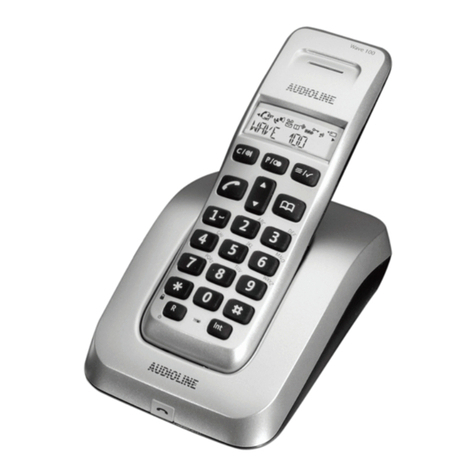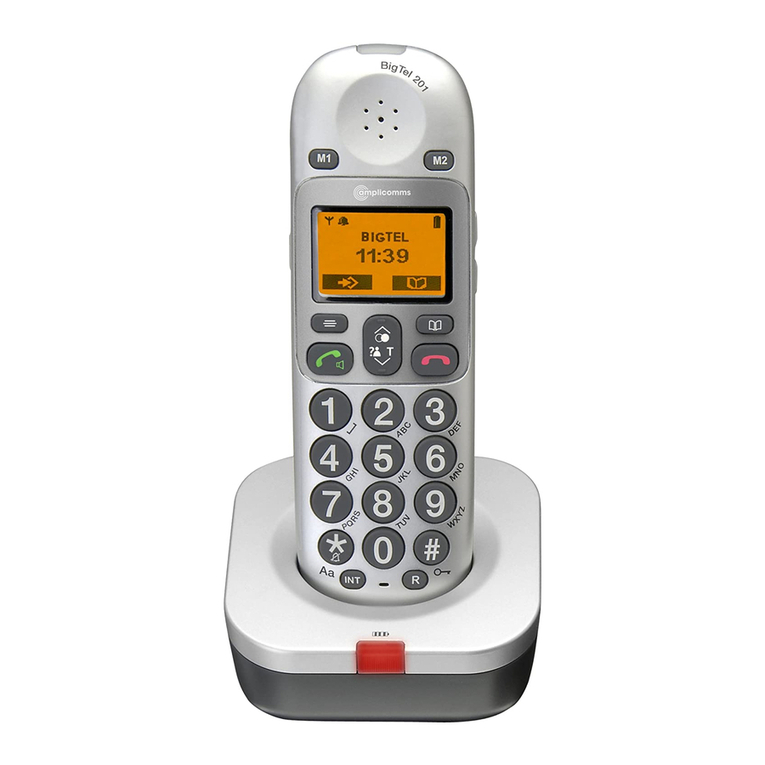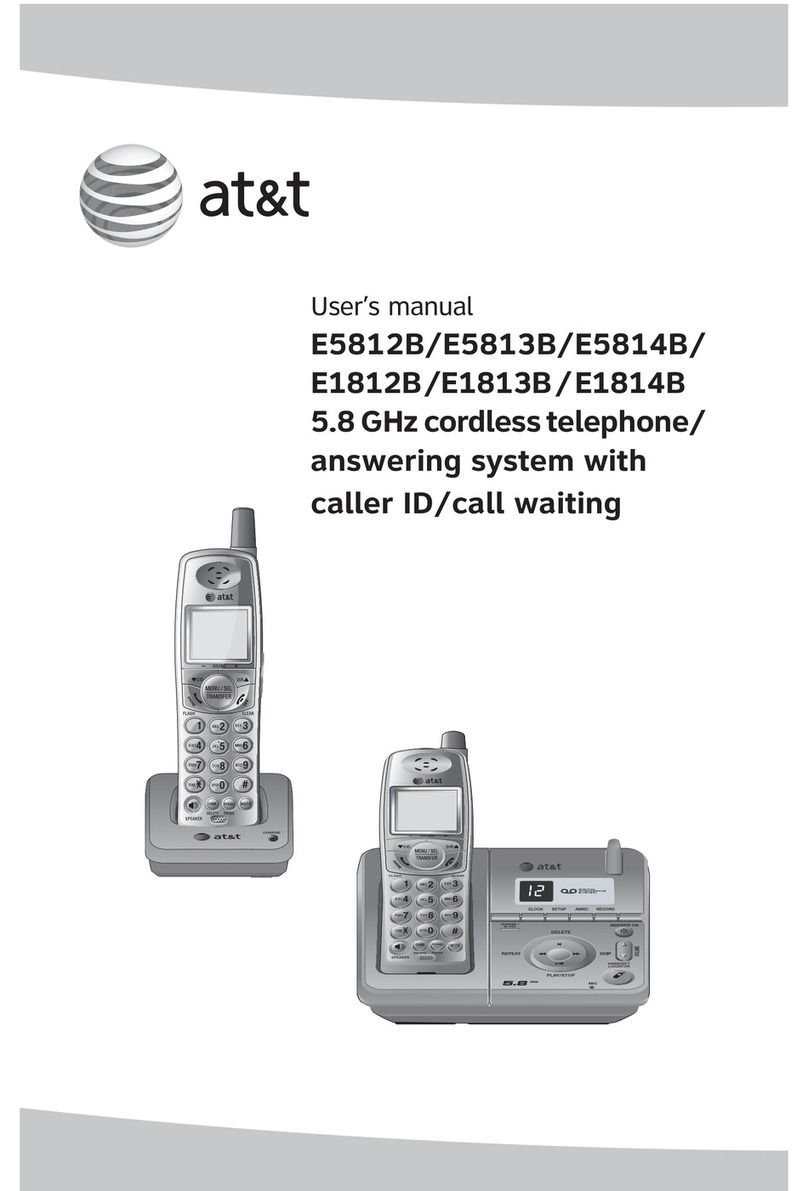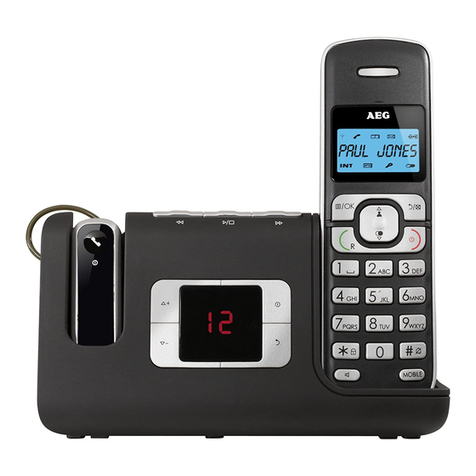CHARGING THE HANDSET
1. Place the handset on the base station for
12 hours.
The CHARGE indicator lights.
●The base station must be connected to
AC power. (See page 11.)
2. Remove the handset from the base
station. Your telephone is now ready to
use.
When the BAIT LOW indicator lights,
recharge the handset for acontinuous 12
hours.
REPLACEMENT BAITERY
CHARGE
indicator
‘If the battery fails, replacement batteries are available from an authorized Sanyo
~service center.
(Replacement battery: SANYO 3N-270AA)
STANDBY TIME
When the handset battery is fully charged, your Sanyo cordless phone offers up
to 3weeks of continuous standby time. (Listed standby time is measured
under asituation in which the handset is kept in standby mode only–no phone
calls are made or received). Under normal usage conditions, recharging is
required more often.
1O-CHANNEL ACCESS/AUTO SCAN
This cordless telephone automatically selects, CHANNEL
every time you answer or place acall using
the handset, aclear channel from 10 frequen- 0
ties available to transmit signals between the
base station and handset. If you notice
interference durina acall, simcrlv mess the
CAUTION
This telephone is for use “tone dialing
system” only.
If you have apulse dialing line, you can’t
use this cordless telephone.
SECURITY CODES
Your cordless telephone works only when the same security code is selected,
from 65,536 possibilities, for both the handset and base station. This prevents
unauthorized use of your telephone line by another cordless telephone.
IMPORTANT:
The following events may cause the security code to be erased and require
resetting:
IAfter the handset battery is replaced or exhausted
iAfter apower interruption
To reset your security code
1.
2.
Place the handset in the base station
cradle.
Within 8seconds, press ~1
on the base station.
The IN USE indicator blinks. Abeep
sounds and the security code is set.
The IN USE indicator then goes off.
If the security code cannot be set, the
fN USE indicator continues to blink for
about 4minutes. When this occurs,
repeat the steps above.
If you experience difficulty in resetting the
security code, first disconnect the AC
adaptor from the unit, reconnect it, and
then try again.
PAGE.$ No
Q
aclear channel.
4(4

